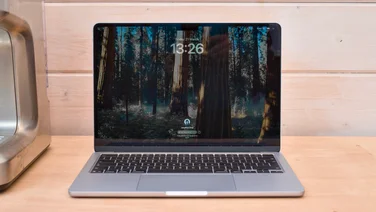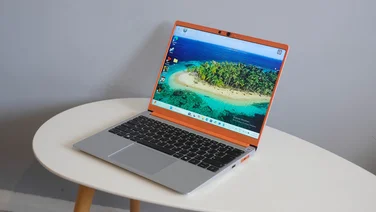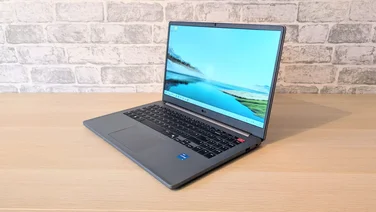To help us provide you with free impartial advice, we may earn a commission if you buy through links on our site. Learn more











- Impressive 8MP webcam
- Evolved “Zero-Lattice” keyboard
- Long battery life
- Expensive
- 60Hz-only display
- Design could be braver
The Dell Pro 13 is the first of the new breed of Dell laptops announced at the 2025 Consumer Electronics Show and represents a seismic shift in Dell’s laptop range. To put it in as few words as possible, the old Inspiron, Latitude and XPS lines are being replaced by three new ranges: Dell, Dell Pro and Dell Pro Max.
In possibly overly simplistic terms, the simple, Dell-branded machines will replace those formerly labelled Inspiron, while Dell Pro will replace Latitude and Dell Pro Max will replace XPS. It’s not entirely cut and dried, though, because the Pro 13 Premium has design elements pulled from both Latitude and XPS.
To make matters even more complicated, within each of these new ranges, there are three sub-categories: Base, Plus and Premium. That means the Pro 13 Premium is the range topper within the middle range. If you want the very best 13in laptop Dell makes, you’ll have to wait for the Dell Pro Max 13 Premium.
Dell Pro 13 Premium: What you need to know
According to Dell, the Pro range is aimed at “professional grade productivity”, which means it needs to excel at work tasks and other serious stuff to earn its keep. With that in mind, Dell has loaded the Dell Pro 13 Premium with the latest Intel Core Ultra Series 2 silicon, a cracking new webcam and a fancy touchpad with built-in conference call controls.
The Pro 13 Premium also heralds the arrival of a new design language, which seeks to take the best from the existing XPS and Inspiron/Latitude designs to create something that will appeal to both business and casual users. This concept manifests itself most clearly in the keyboard. What we have here is an XPS “Zero-Lattice” keyboard but shorn of some of the extreme features that weren’t to many users’ tastes.











Naturally, this being Dell, there’s a wide range of options to pick from prior to purchase: you can add cellular connectivity, for instance, omit Bluetooth for security reasons and choose to include Intel’s vPro Enterprise Management software in the package among other things.
Price and competition
Configuration tested: 8-core 5Ghz Intel Core Ultra 7 268V CPU, 32GB RAM, 1TB SSD, 1,920 x 1,200 IPS 60Hz display. Price when reviewed: £2,443
At the time of writing, the cheapest Dell Pro 13 Premium was £1,742 (actually, if you opt for the 40Wh rather than 60Wh battery, you can shave £17 off that, but why would you?) and that rises to just under £2,800 for a machine with all the bells and whistles and a 5G eSIM.
I’ll cover some of the main choices as I go, but even a cursory glance should suffice to tell you this is not a cheap laptop, and for quite a bit less, you can pick up some very tasty alternatives.











My favourite compact laptop is the Asus Zenbook S 14 with a Core Ultra 2 CPU. It’s achingly pretty, has a glorious 2.8K 120Hz OLED screen, decent battery life and at the time of writing Asus is knocking it out with a £300 discount.
Lenovo’s Yoga Slim 7i Gen 9 Aura Edition has a 15.3-inch screen, so it has an obvious advantage over the 13.3 and 14-inch Windows competition. It’s a searingly bright 2.8K IPS affair that’s both colourful and accurate. Being a Lenovo, the keyboard is, of course, excellent.











The doyen of compact laptops, the Apple MacBook Air, now has M4 power, and with prices starting at £999 for the 13.6in model and £1,199 for the 15.3in version, it’s quite the value pick if you can live with a 256GB SSD.
The swansong for Dell’s XPS range is the Qualcomm Snapdragon-powered XPS 13. Some love it, some hate it, but it was undeniably new and bold and for that alone I’ll be sad to see it go. The capacitive touch bar is an acquired taste, but performance and battery life from the Qualcomm chipset is impressive
Design and features
If one were to take a Dell Latitude 13.3 laptop and add the Zero-Lattice keyboard from the XPS 13 the end result would look much like the Pro 13 Premium. And that’s no bad thing. The end result is not as pretty as the likes of the Asus Zenbook S 14 or Zenbook A14 but it’s still a handsome and very solid machine.
Thanks to a chassis and body made from 90% recycled magnesium and MIL-STD-810-compliant build quality, the Pro 13 Premium is entirely and impressively free from any hint of flex.











The lid, which folds back to 180-degrees, is unusually stiff for one lacking a fully laminated glass cover. There’s only one colourway, which Dell calls “Magnetite” but everyone else would call grey. It’s good at resisting fingerprints, but visually rather dowdy.
At 18mm thick, the little Dell isn’t the most svelte of compact laptops, either, but it only weighs a little over 1kg (1,071g to be exact, according to Dell, 1,040g according to my scales), which is lighter than a 13.6in MacBook Air.











And Dell has put the chunky profile to good use by fitting an HDMI 2.1 port on the left side and a USB-A 3.2 Gen 1 port on the right to back up the Thunderbolt 4 ports on either side. There’s also a 3.5mm audio jack on the left. It’s good to see that Dell has decided that reducing I/O ports to the absolute minimum as per the original XPS 13 is not a good thing.
Wireless communications are bang up to date, with the Intel BE201 card supporting Wi-Fi 7 and Bluetooth 5.4 and storage comes courtesy of a 1TB M.2 2230 SSD, which, in the case of my machine, was made by Micron and recorded class-average sequential read and write speeds of 4,039MB/sec and 2,659MB/sec.
Getting inside the Pro 13 is easy enough, but you can’t do much other than swap out the battery and clean the fans once you’re in. The RAM and wireless card are fixed in place and there’s only a single SSD mount, son increasing your storage capacity would involve replacing rather than simply adding to what’s already there.
Keyboard, touchpad and webcam
Dell’s Zero-Lattice keyboard design has so far proved to be something of a marmite affair: you either loved it or hated it, though much of the hate has been directed at the capacitive function bar rather than the keyboard itself. Personally, I got along just fine with the zero-lattice, along with all its foibles.
For the Pro 13 Premium, Dell has taken a middle path by keeping the basic keyboard design with its large but tightly packed keys, and has ditched the capacitive bar in favour of a conventional, but still Zero-Lattice design, row above.
This means the Pro 13 Premium has all the best traits of the XPS 13 keyboard – large keys, a crisp and positive action and a very solid deck – but a less-challenging arrangement for the function keys.











Dell makes much of the keyboard’s “Mini-LED” backlight, which apparently is less power-hungry than other systems. Be that as it may, I was more impressed by the way the two-stage white backlight gently glowed through the key caps making for great legibility in all lighting environments.
The touchpad isn’t the largest I’ve seen on a 13-inch laptop at just 125 x 70mm, but it’s very smooth, nicely reactive and the mechanical click-action is positive, clean and quiet.
My machine came equipped with the optional Collaboration Touchpad, which has four touch symbols that become visible during Zoom or Microsoft Teams calls, and these are quick shortcuts that let you do things like cut your video feed, mute the microphone and chat. I found it a handy feature: less than a revolution but certainly more than a gimmick.











The 8-megapixel (1440p) webcam is excellent, though. It’s crisp and images look very colourful in even the most challenging lighting conditions. It also implements the blur effects in Windows Studio Effects better than many webcams I’ve tested, with less of the distracting hazing around the head.
The webcam module also supports Windows Hello IR facial recognition, giving you a choice of two forms of biometric security. There’s also a fingerprint scanner that sits in the top right corner of the keyboard.
Display and audio
The Dell Pro 13 Premium comes with three 13.3in display options, all of which are IPS and refresh at 60Hz. Top of the tree is a 2,560 x 1,600, 500cd/m2 100% sRGB touchscreen. The next in the lineup is a 1,920 x 1,200, 400cd/m2, 100% sRGB display. And, sitting at the bottom of the range, the final option is a 1,920 x 1,200, 300cd/m2 screen that reproduces only around 45% or the NTSC colour space, which equates to around 60% sRGB.
My machine came with the middle one, which is a £160 upgrade over the cheaper (best avoided) panel. In testing, this display does rather better in testing than Dell claims, with maximum brightness reaching 443cd/m2 and colour reproduction maxing out at 110% of sRGB. The contrast ratio is good too, at 1,809:1.
The display is usefully colour accurate, with a Delta E variance of 1.51 vs the sRGB profile, and it has a matte finish which makes it very good at keeping reflections at bay.











I’m less convinced about the suitability of the display for a laptop costing around two thousand pounds. For considerably less, Lenovo and Asus will sell you an alternative with a 2.8K 120Hz touch display that’s more colourful (the Dell’s screen only covers 78.1% of the DCI-P3 gamut volume) and more accurate, and can support HDR content. The Dell brochure for the Pro 13 and Pro 14 Premium lists a 2.8K OLED option, but that’s only available for the 14in model.
The sound system is more worthy of the price tag. It’s a four-speaker setup with two drivers firing up through grilles that flank the keyboard and two downward out of a couple of slits in the front of the base plate.
Maximum volume measured against a pink noise source at 1m came back at 77.6dBA, which is easily on the room-filling end of the volume scale, and there was plenty of bass in evidence. Overall, I’d describe the sound profile as detailed and fulsome; for a laptop, the Dell Pro 13 Premium delivers a very pleasant listening experience.
Performance and battery life
Dell offers a choice of four Intel Core Ultra Series 2 chips with the Pro 13 Premium: the Intel Core Ultra 5 236V, which has 16GB of on-chip RAM, and the Intel Core Ultra 5 238V, which has 32GB; and the Intel Core Ultra 7 266V, which as 16GB of RAM and the Intel Core Ultra 7 268V, which comes with 32GB.
Opting for a Core Ultra 5 CPU will save you £211, but there’s no price advantage to be gained by picking the CPUs with 16GB of RAM so you may as well opt for 32GB. My review machine came with the Core Ultra 7 268V with 32GB of DDR5 RAM.
Just to refresh your memory, the Core Ultra 7 268V is an octa-core chip with four performance cores and a maximum turbo clock speed of 5GHz. In our 4K multimedia benchmark, this helped the Dell Pro 13 Premium beat all the other 2nd-generation Core Ultra laptops we’ve tested and the new M4 MacBook Air.
In the Geekbench 6 multi-core CPU test, the MacBook and the Snapdragon-powered Dell XPS 13 both have the legs on the Pro 13 because they both have more cores; ten in the case of the Apple machine and 12 in the case of the XPS.
The MacBook takes the honours when it comes to graphics, too, but not by much, enjoying an 18% in the Geekbench Open CL test. The Intel Arc 140V iGPU is still a very handy performer though.
It ran the SPECviewperf 3dsmax 3D modelling test at 26.4fps, an achievement beyond the wildest imaginings of Intel integrated graphics chips just a year ago.
Not only that, but Dell has tuned the cooling system to perfection. Under extreme stress testing, CPU utilisation settled down to a more than respectable 75%, while the base plate never got anywhere close to warm and fan noise remained a lowly whisper.
When it comes to battery life, the little Dell brings home the bacon, running for two minutes shy of 21 hours from its 60Wh battery. The Lenovo Yoga Slim 7i can do better, but only to the tune of 12 minutes, and the Snapdragon-based Acer Swift 14 AI is still the champion at 24hrs 2mins, but the MacBook Air’s 15hrs 52mins looks anaemic in comparison.
Manufacturers often quote battery life figures based on setting the screen brightness to 50%. In our rundown battery test, we don’t do that because different screens output different brightness intensity levels – and testing battery life like this doesn’t give an apples to apples comparison between devices from different manufacturers.
Instead, we display a fully white screen (turning auto brightness and any automatic contrast features off) and, using a colorimeter, adjust the brightness until a brightness level of 170cd/m2 is reached. We run our tests like this across laptops, tablets and smartphones.
Should you buy the Dell Pro 13 Premium?
For the home user, the biggest, nay, only issue with the new Dell Pro 13 Premium is the price. The cheapest version of the Dell Pro 13 Premium you should consider is the Core Ultra 236V (16GB RAM) with a 512GB SSD and the 400cd/m2 Full HD display, and that will set you back just under £1,950.
Given the 2.5K screen only increases the price to £1,993, you should certainly tick that box, but that still doesn’t give you a display to match the Apple, Asus or Lenovo competition in terms of colour output or accuracy. Even the much-maligned Dell XPS 13 can be had with a 2.8K OLED touchscreen for £1,650.
Everything else about the Dell Pro 13 Premium is bang on the money: It’s powerful, the speakers are great, it’s smart, well made and delivers impressive battery life. If you’re getting one on the company dime, you’ll be very happy with it, but if it were my money, I’d pick an Asus Zenbook S 14 for £1,200 and pocket the difference.
| Dell Pro 13 Premium specifications | |
|---|---|
| Processor | Intel Core Ultra 7 268V |
| RAM | 32GB |
| Additional memory slots | No |
| Max. memory | 32GB |
| Graphics adapter | Intel Arc Graphics 140V |
| Graphics memory | Shared |
| Storage | 1TB |
| Screen size | 13.3in |
| Screen resolution | 1,920 x 1,200 |
| Pixel density | 170ppi |
| Screen type | IPS, 60Hz |
| Touchscreen | No |
| Pointing devices | Touchpad |
| Memory card slot | No |
| 3.5mm audio jack | Yes |
| Graphics outputs | Thunderbolt 4 x 2, HDMI 2.1 x 1 |
| Other ports | Thunderbolt 4 x 2 |
| Web Cam | 8MP |
| Speakers | Stereo |
| Wi-Fi | Wi-Fi 7 |
| Bluetooth | Bluetooth 5.4 |
| NFC | No |
| Dimensions | 296 x 209 x 18mm (WDH) |
| Weight – with keyboard where applicable | 1.07kg |
| Battery size | 60Wh |
| Operating system | Windows 11 Pro |






